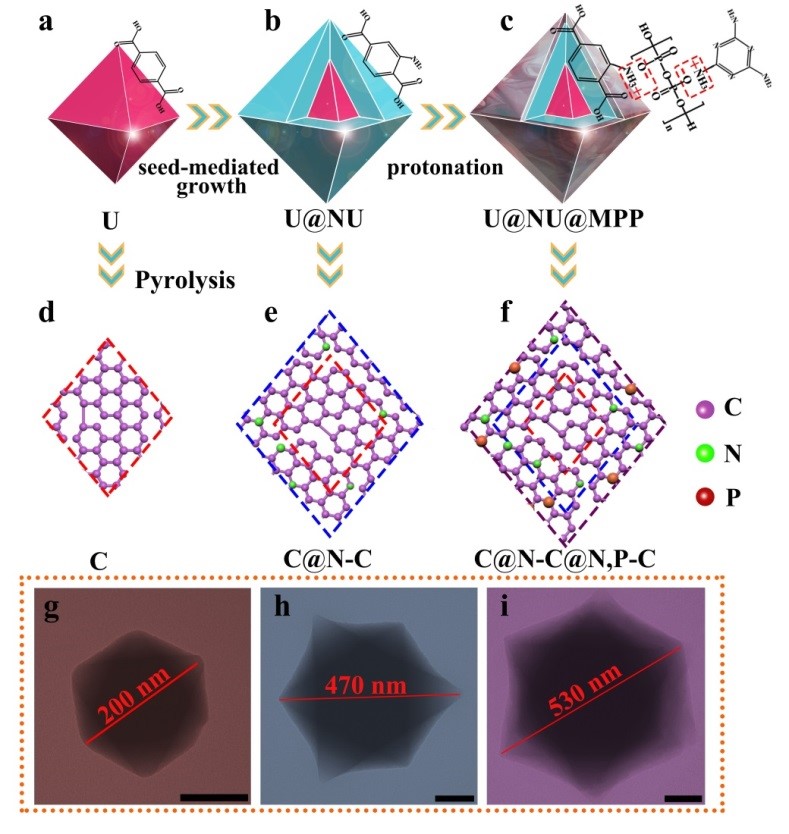Recently, the research results titled "Heteroatomic interface engineering in MOF-derived carbon heterostructures with built-in electric-field effects for high performance Al-ion batteries" is published on Energy & Environmental Science (IF=30.067). This work is finished independently by the School of Materials Science and Engineering, Shandong University. Professor Yin Longwei is the corresponding author and Li Caixia is the first author of this paper.
Aluminum ion batteries (AIBs) have been reported for the first time in 1940s, with high theoretical specific capacity of 2980 mA h g-1 and abundant Al source. Since Dai's group developed a secondary AIBs system based on 3D graphitic foam cathode in (EMIC-AlCl3) ion liquid electrolyte in 2015, it became a hot research topic. This work reported by Yin et al focused on the slowly transfer kinetics of large-diameter AlCl4- and based on Zr-MOFs (UiO-66 and NH2-UiO-66), melamine phosphate (MPP) precursors, in which porous carbon active materials with accurately tunable gradient N, P doping was obtained.
In this work, firstly, the terephthalic acid was used as ligand and combined with Zr4+ in DMF solution, secondly, UiO-66@NH2-UiO-66 was obtained by seed-mediated growth, and then due to protonation process of -NH2 and melamine phosphate (MPP), UiO-66@NH2-UiO-66@MPP was prepared. After pyrolysis process, the corresponding C, C@N-C and C@N-C@N,P-C samples were acquired with controllable octahedron structure, high porosity and gradient heteroatom doping. The high surface area and high porosity could facilitate electrolyte infiltration and offer efficient transport pathway for the AlCl4- anions. What’s more, gradient N, P doping could modify electronic structure of MOFs-derived carbon, and lead to charge redistribution to induce graded energy level and built-in electric field, thus boosting interfacial charge transfer and accelerating reaction kinetics.
Professor Yin Longwei's group focus on the design and preparation of porous structured composites for an extended period, and they studied deeply about the relationship between porous structure and energy storage mechanism with significantly improved electrochemical performance. As a result, a series of advanced research results have been achieved. The above research is supported from the project supported by the State Key Program of National Natural Science of China (Control preparation and energy storage application of mesoporous/microporous composite materials, No. 51532005).
Energy & Environmental Science is a top journal among more than 400 journals in the field of energy and environmental science, which was established by the Royal Society of Chemistry with a 2017 impact factor of 30.067.

Source: the School of Material Science and Engineering
Written by: Wang Zhou
Edited by: Xie Tingting